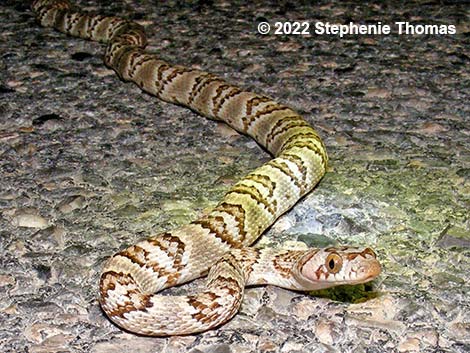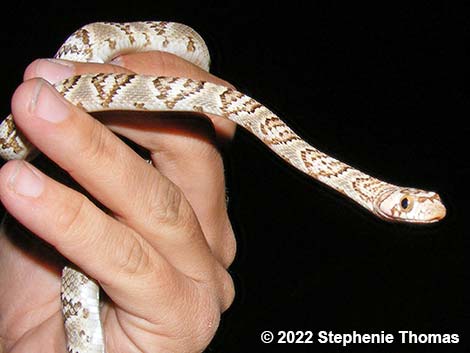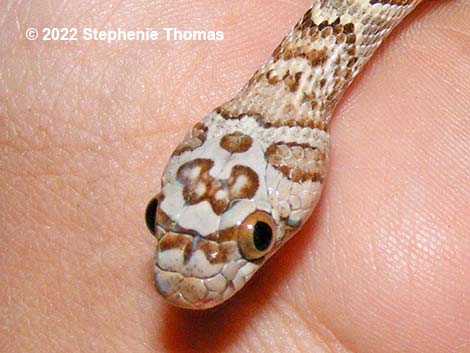
California Lyre Snake (Trimorphodon lyrophanes)
Lyre Snake (Trimorphodon biscutatus)
Snakes Around Las Vegas, Wildlife Around Las Vegas
 |
General Description: A medium sized, fairly heavy bodied snake with dark dorsal blotches (almost diamonds) and a relatively big head. The top of the head has a V-shaped "lyre" mark. The pupils are cat-like (vertical, not round), although they might appear round in the dark. Taxonomy: Colubrid Snakes Family (Colubridae) |
 |
Technical Description: A medium sized (total length: 45-70 cm [18-28 in.]) snake with a wide head, narrow neck, and cat-like (vertical) pupils. The body color is gray or tan, and there are brown, saddle-shaped markings on the dorsum. A V-shaped patch is present on the head that resembles a lyre. Other similarly marked species lack the lyre-mark and have round pupils.
|
 |
Diet: Feeds on lizards, small mammals, birds, bats, and other species that inhabit rocky areas and cliffs. Habitat: Rocky canyons and hillsides in Mojave Desert Scrub, Pinyon-Juniper Woodland, and Pine-Fir Forest habitat types in lowlands, mesas, and lower mountain slopes up to about 7,000 ft elevation. |
 |
Range: The species occurs across the desert southwest from California to Texas and southward into northern Mexico. The Sonoran Lyre Snake occurs in southeastern California, southern Nevada, southwestern Utah, western and southern Arizona, and northern Mexico. The California Lyre Snake occurs in southern California and perhaps southwestern Nevada. |
 |
Breeding: Lays 7-20 eggs. Similar Species: Several other species of snakes have dorsal blotches, and with a big head, lyre snakes could be confused with rattlesnakes, but no other species around Las Vegas has the distinct V-shaped lyre mark atop the head. Comments: Secretive. This species is a good climber and can climb rocks and trees. This species is venomous and has fangs that are located in the upper jaw, but at the back of the mouth (a rear-fanged species). The venom is capable of immobilizing its small prey, but it is considered harmless to humans. |
Note: All distances, elevations, and other facts are approximate.
![]() ; Last updated 221214
; Last updated 221214
| Snakes Around Las Vegas | Wildlife Around Las Vegas | Glossary | Copyright, Conditions, Disclaimer | Home |